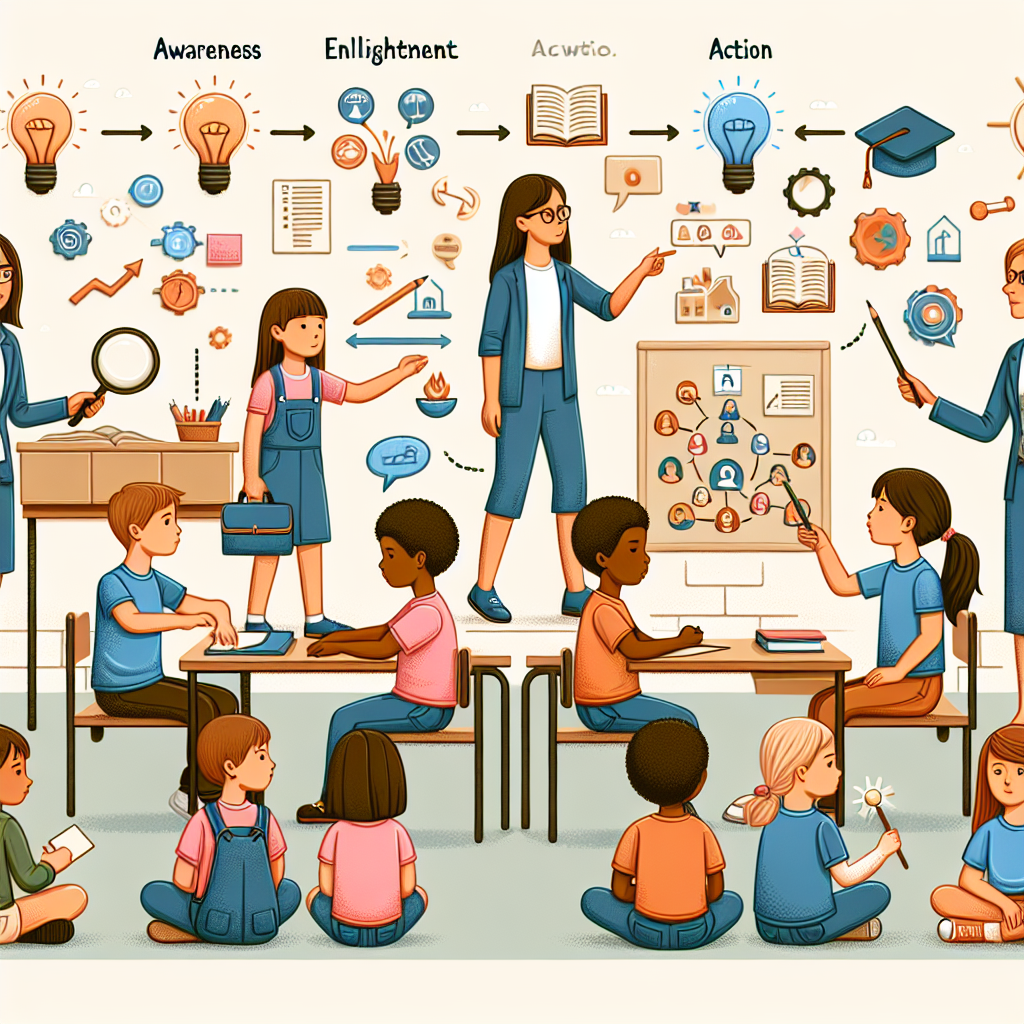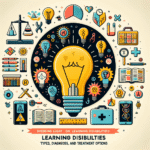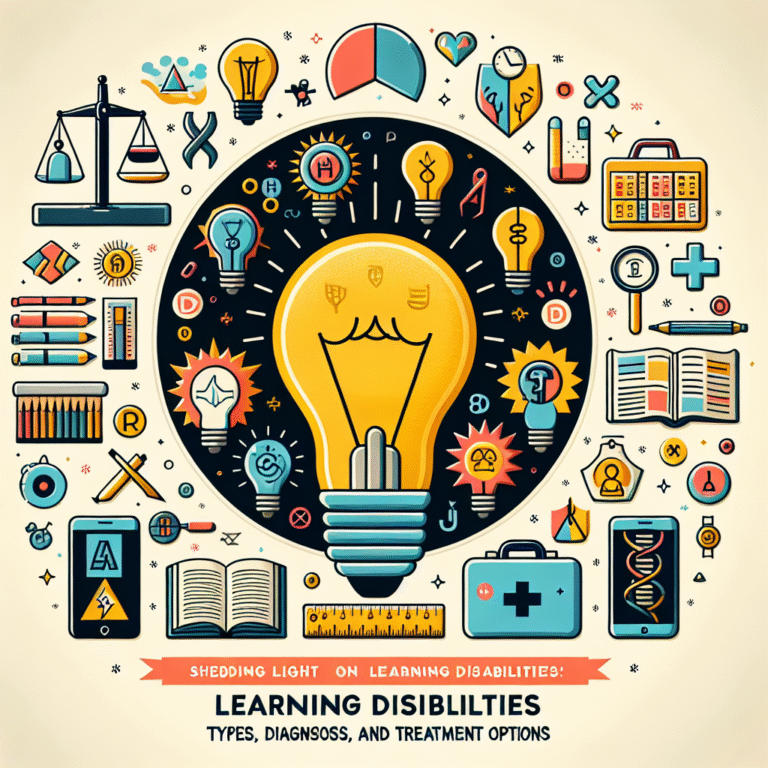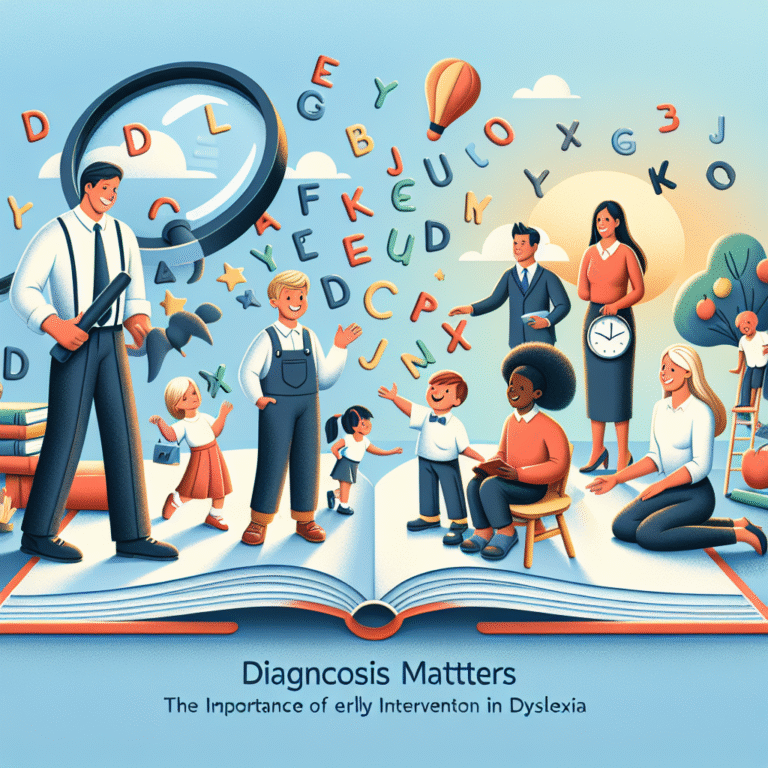
From Awareness to Action: How Schools Can Better Support Students with Learning Disabilities
Introduction
In an educational landscape where inclusivity is becoming increasingly prioritized, understanding how to effectively support students with learning disabilities is not just important—it’s essential. From Awareness to Action: How Schools Can Better Support Students with Learning Disabilities goes beyond mere acknowledgment of the challenges faced by these learners to actionable strategies that can transform educational practices. This article will explore innovative approaches, share inspiring case studies, and illustrate how schools can create environments that empower every student, particularly those who face learning difficulties.
The statistics are alarming, yet revealing. According to the National Center for Learning Disabilities, approximately 1 in 5 students has learning and attention issues. This isn’t merely a number—it’s a call to action for educators, policymakers, and communities to reevaluate the structures in place. It’s time to move from awareness of these statistics to proactive steps that ensure all students receive the support they need to thrive academically and socially.
Understanding Learning Disabilities: More than Just a Label
The Spectrum of Learning Disabilities
Learning disabilities (LD) encompass a wide range of neurological conditions that affect how individuals process information. These can include dyslexia (reading difficulties), dyscalculia (math difficulties), dysgraphia (writing difficulties), and many other specific learning disabilities. Each condition presents unique challenges, and understanding these intricacies is vital for schools aiming to support students effectively.
The Importance of Early Identification
Early identification of learning disabilities can dramatically improve a student’s educational experience. Schools need to implement robust screening systems that allow for the detection of learning challenges as early as possible. This proactive approach is the first critical step in moving from awareness to action.
Table 1: Importance of Early Identification of Learning Disabilities
| Benefit | Description |
|---|---|
| Personalized Support | Tailored interventions can significantly enhance learning outcomes. |
| Emotional Well-being | Early diagnosis helps reduce feelings of frustration and isolation. |
| Lifelong Skills Development | Skills acquired early can support future learning and adaptability. |
Building Awareness Among Educators
Training and Professional Development
Educators play a crucial role in supporting students with learning disabilities. Therefore, investing in comprehensive training programs is paramount. Schools should provide professional development opportunities focusing on LD awareness, teaching strategies, and emotional support.
A school district in California, for example, implemented a mandatory workshop series for all teachers on recognizing and supporting students with learning disabilities. The outcome? A reported 30% increase in teachers’ confidence when addressing these students’ needs.
Fostering a Culture of Inclusivity
Creating an educational environment that embraces diversity is essential. Schools must encourage a culture where differences are celebrated rather than stigmatized. This includes training educators to employ inclusive teaching methods and creating an environment where students feel safe to express their difficulties.
Curriculum Adaptation and Differentiation
Tailoring Curriculum for All Learners
"One size fits all" approaches rarely work for students with learning disabilities. Schools need to adapt curricula to accommodate diverse learning styles. This can involve simplifying language, using visual aids, and integrating technology.
Case Study: A Middle School’s Adaptive Learning Program
At River Valley Middle School, the administration restructured its curriculum to include adaptive learning technologies that adjust to a student’s pace and learning style. After one year, students with learning disabilities showed a significant improvement in grades and engagement.
Analysis:
This case highlights the effectiveness of using tailored methods that meet students where they are. By personalizing education, schools not only improve academic outcomes but also enhance students’ self-esteem and motivation.
Implementing Multi-tiered Systems of Support (MTSS)
Implementing an MTSS framework enables schools to provide different levels of support based on student needs. Initial universal interventions can help all students, and increasingly targeted strategies can assist those with identified learning disabilities.
Table 2: MTSS Tiers of Support
| Tier | Description | Support Type |
|---|---|---|
| Tier 1 | Universal support for all students | High-quality, research-based instruction |
| Tier 2 | Targeted interventions for at-risk students | Small group instruction and tutoring |
| Tier 3 | Intensive interventions | One-on-one support with specialists |
Engaging Families and Communities
Parental Involvement in Education
Engaging parents in their children’s education creates a support network that is vital for student success. Schools should establish regular communication with families, offering resources and opportunities to participate in the educational process.
Case Study: Parent Support Workshops
A school in Texas organized workshops to inform and empower parents of students with learning disabilities. The result was increased parent engagement and significantly improved student performance.
Analysis:
This emphasizes the critical role families play in the educational ecosystem. Schools that prioritize communication and support for families can create a holistic environment that fosters student growth and resilience.
Building Community Partnerships
Collaborating with local organizations can enrich the support system for students with learning disabilities. Partnerships with mental health professionals, tutoring centers, and community groups can provide additional resources and expertise.
Utilizing Technology to Support Learning
Digital Tools and Learning Aids
In the modern classroom, technology can be a game-changer for students with learning disabilities. Tools such as speech-to-text software, audiobooks, and specialized applications can cater to various learning needs.
Case Study: Technology Integration in Classrooms
A high school in New York adopted a technology program that allows students with dyslexia to access digital textbooks paired with audio narration. This innovation resulted in a 25% increase in reading comprehension scores among students with dyslexia.
Analysis:
Leveraging technology to support students with difficulties demonstrates how schools can embrace innovative solutions to enhance learning experiences.
Cultivating Social-Emotional Learning (SEL)
The Role of SEL in Educational Success
Supporting students with learning disabilities goes beyond academic achievement. Social-emotional learning promotes the development of self-awareness, self-management, and interpersonal skills essential for navigating the educational environment and beyond.
Providing Mental Health Resources
Schools should make mental health resources readily available to support the emotional well-being of students with learning disabilities. Providing access to psychologists or counselors can help students manage anxiety, frustration, and other challenges.
Conclusion
From Awareness to Action: How Schools Can Better Support Students with Learning Disabilities is not just a call for awareness; it’s an appeal for comprehensive action. By creating an inclusive environment, adapting curricula, fostering relationships with families, utilizing technology, and prioritizing social-emotional learning, schools can support all students in their educational journeys.
Let’s recognize that moving from awareness to action isn’t merely an institutional responsibility; it requires collective efforts from educators, families, and communities to ensure that every student, particularly those with learning disabilities, can thrive.
FAQs
1. What are learning disabilities?
Learning disabilities refer to a range of disorders that affect the ability to learn, process information, and communicate effectively. Examples include dyslexia, dyscalculia, and dysgraphia.
2. How can schools identify students with learning disabilities?
Schools can identify students through various means, including standardized testing, teacher observations, and parental input. Early intervention and regular assessments are crucial for accurate identification.
3. What are some effective teaching strategies for students with learning disabilities?
Effective strategies include differentiated instruction, multisensory teaching techniques, and the use of assistive technology tailored to individual learning needs.
4. How important is parental involvement in supporting students with learning disabilities?
Parental involvement is critical. Engaged parents can provide additional support at home, communicate effectively with teachers, and help advocate for their children’s needs.
5. What role does technology play in supporting students with learning disabilities?
Technology can provide personalized learning experiences through adaptive tools and resources that cater to individual learning styles, enhancing engagement and comprehension.
6. How can schools foster a culture of inclusivity for students with learning disabilities?
Schools can foster inclusivity by promoting awareness, providing professional development for educators, and creating policies that encourage acceptance and support for all learners.
By focusing on actionable steps and collaborative efforts, we can ensure that schools move from awareness to meaningful action, truly supporting students with learning disabilities in achieving their fullest potential.









